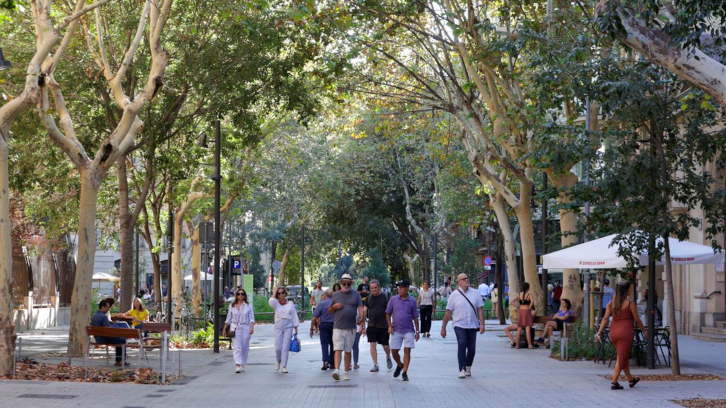Can Pedestrianization Trigger Gentrification?

Contemporary urban planning promotes pedestrian and cyclist mobility in cities. Despite its environmental, social, and health benefits, a study by the Department of Geography at UAB shows that pedestrianization can transform the social composition of a neighborhood by attracting wealthier residents.
The transformation of cities to promote pedestrian and cyclist mobility has become a central focus of contemporary urban planning. The pedestrianization of streets and plazas is a widely used strategy toward this goal, as it helps reduce pollution and improve people's health. However, these transformations also generate a range of social effects. Some align with the objectives of the measure, such as the creation of new public spaces and the strengthening of social cohesion. Others may pose challenges—such as gentrification, an urban phenomenon in which neighborhood improvements attract wealthier residents, raise housing prices, and make it harder for lower-income residents to stay.
A recent study by the Universitat Autònoma de Barcelona (UAB) analyzed the effect of pedestrianization projects carried out between 2012 and 2020 in Barcelona on the city's sociodemographic composition, raising a key question: Can these transformations of public space in favor of pedestrians contribute to gentrification? To answer this question, the research examined changes in the population living in pedestrianized areas and compared them with non-intervened zones.
The results indicate that although the city of Barcelona as a whole has undergone significant changes, those changes have been more intense in the pedestrianized areas. Specifically, the study found that these areas experienced:
— A greater increase in residents from other European countries and the United States (to the detriment of populations from countries with lower purchasing power).
— A larger rise in the proportion of residents with university education.
— A decrease in the percentage of residents over 65 years old.
These changes suggest that pedestrianized areas, following their transformation, have tended to attract a younger population with higher education levels and origins in wealthier countries—fitting the profile of gentrification processes. While the scale of these changes is still moderate, the study finds an upward trend that, if it continues, could progressively alter the social fabric of the affected neighborhoods.
The study's findings do not dispute the benefits of pedestrianization, as they contribute to improved quality of life for residents. However, they do highlight the need to introduce complementary measures to ensure that these benefits are distributed in a socially equitable way. Policies such as regulating housing prices, promoting affordable housing, or supporting local businesses can help ensure that pedestrianization improves quality of life without unintentionally creating inequalities.
Department of Geography
Universitat Autònoma de Barcelona
References
Villar-Abeijón, P.; Miralles-Guasch, C.; Marquet, O. (2025). Can pedestrianization trigger gentrification? Analysis of Barcelona’s sociodemographic changes following pedestrianization schemes. Transportation Research Part D: Transport and Environment, 142, 104718. https://doi.org/10.1016/j.trd.2025.104718


